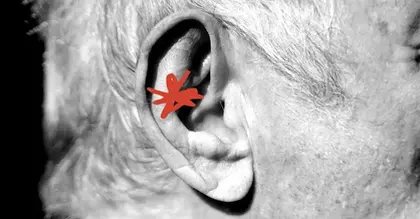
- Previous studies show that genetics can increase a person’s risk of developing Alzheimer’s disease.
- One genetic variant associated with Alzheimer’s disease progression is presenilin 2 (PSEN2), which is correlated to an increased risk for early-onset familial Alzheimer’s disease (EOFAD).
- Researchers have found a 75-year-old man considered an Alzheimer’s ‘escapee’ as he has yet to show signs of the disease despite carrying his family’s PSEN2 gene mutation.
- Scientists are now working to find the mechanism behind his brain’s resistance in the hopes of identifying new therapeutic targets for Alzheimer’s disease.
Previous studies show that genetics can increase a person’s risk of developing Alzheimer’s disease — a type of dementia negatively impacting cognition and memory.
Researchers estimate there are at least
PSEN2 mutations are associated with an
Researchers from the Washington University School of Medicine in St. Louis has identified a 75-year-old man they call an Alzheimer’s “escapee” because he is yet to show any signs of Alzheimer’s disease, despite inheriting the PSEN2 mutation that has caused EOFAD for the rest of his family members.
Scientists are now working to identify the mechanism behind his resilience to Alzheimer’s disease, despite carrying the genetic mutation, in hopes of identifying new therapeutic targets for the condition.
The study was recently published in the journal
Researchers reportedly first met 75-year-old Seattle, WA resident Doug Whitney back in 2011 when he volunteered to participate in the international Dominantly Inherited Alzheimer Network (DIAN) study.
“DIAD (dominantly inherited Alzheimer’s disease) is characterized by its genetic predictability and almost 100% penetrance, meaning if you inherit the mutation, you are almost certain to develop Alzheimer’s, often at a much younger age than typical sporadic Alzheimer’s cases,” Jorge J. Llibre-Guerra, MD, assistant professor of neurology at Washington University in St. Louis and co-first author of this study told Medical News Today.
“The study of DIAD not only improves our understanding of this specific form of Alzheimer’s but also enhances our knowledge of sporadic Alzheimer’s disease,” he noted.
“The experience gained from developing and applying therapeutic approaches in DIAD has significant potential to inform and improve strategies for treating sporadic Alzheimer’s disease, potentially leading to more effective management and preventative measures for a broader population at risk,” Llibre-Guerra continued.
“[Whitney’s] case provides a rare opportunity to investigate potential protective factors and mechanisms that could be influencing the non-typical progression of the disease, offering insights that could lead to new therapeutic strategies,” he told us.
During the DIAN study, researchers learned that Whitney’s relatives normally showed signs of cognitive decline in their early 50s.
However, Whitney himself showed no signs of
When scientists found out Whitney had inherited the gene, he earned the title of “escapee” or “exceptional resilience mutation carrier” where something in his body was stopping the PSEN2 mutation from taking effect.
Via brain scans, Llibre-Guerra and his team observed that while Whitney had high levels of amyloid protein in his brain, he only had a localized concentration of the protein tau.
“This unusual pattern might be indicative of protective mechanisms at play that prevent the widespread tau deposition usually associated with cognitive decline in Alzheimer’s, thus preserving his cognitive functions longer than expected,” Llibre-Guerra said.
At this point, Llibre-Guerra said they are not yet sure what might be allowing Whitney to be an Alzheimer’s “escapee,” but they do have a hypothesis.
“It might be more a combination of factors rather than a single one,” he detailed. “From the current data, it might be that a combination of genetic factors, possibly novel protective genetic variants, environmental influences, protein expression, and inflammatory response might induce protective responses in his brain and contribute to resilience against typical Alzheimer’s progression.”
“The study’s findings could potentially lead to new therapeutic targets, especially in understanding and manipulating the factors that limit tau pathology spread and amyloid toxicity,” Llibre-Guerra continued.
“Identifying how certain proteins and genetic variants contribute to this protective effect could open up new avenues for drug development aimed at mimicking these natural defenses in broader populations,” he added.
MNT had the opportunity to speak with Clifford Segil, DO, a neurologist at Providence Saint John’s Health Center in Santa Monica, CA, about this study.
“The results of this study are challenging to believe, as they highlight tau was found only in [the] patient’s
“If tau pathology was noted in patients’ occipital regions and this study’s participant was without visual complaints, there would be no expectation tau in the other parts of the brain would cause symptoms if this patient had occipital tau without visual complaints,” he noted.
In Segils’s view as a neurologist, ”it is awkward for the authors to say that because this carrier was without spread of tau pathology outside of the occipital region he was without cognitive sides when he had occipital tau pathology and was without visual complaints one would expect from occipital dysfunction.”
“This study actually supports that tau pathology remains unclear for any disease outside of tangles being well known to affect Parkinsonism,” he pointed out.
“I would like to see if the blocking of tau-deposition, which is well established to be related to movement disorders like Parkinsonism, more than Alzheimer’s Dementia, could be a therapeutic intervention for patients with movement disorders more than memory loss, or be used to treat Parkinson’s disease more than Alzheimer’s Dementia,” Segil added.
MNT alsospoke with Jasmin Dao, MD, PhD, a pediatric and adult neurologist at Miller Children’s & Women’s Hospital Long Beach and MemorialCare Long Beach Medical Center in California, about this research.
“It is remarkable that someone with an inherited mutation that is known to cause early onset Alzheimer’s disease shows no sign of illness at age 75,” Dao commented.
“This just shows that even though we have identified key genes of Alzheimer’s disease that can predict with high accuracy the disease risk and age of onset of Alzheimer’s disease, there are potential genetic and
proteomic markers that are neuroprotective against tau pathology and may change the course of this disease.”– Jasmin Dao, MD, PhD
“Current therapies are centered around early detection and slowing disease progression,” she continued. “A person with dominantly inherited Alzheimer’s disease (DIAD) is almost guaranteed to develop Alzheimer’s disease at an early age (30-50s), so it can provide a great deal of information on the pathology of the disease even in its preclinical stages. These findings can then be applied to the more common form, late- onset Alzheimer’s disease to help slow progression earlier on.”
“While this study has identified protective genetic variants to resist the development and progression of DIAD, more studies need to be done to understand the underlying mechanisms,” Dao added. “Specifically, how do these variants restrict pathological tau spread? Understanding this can lead to development of novel therapeutic target treatments for Alzheimer’s disease.”





